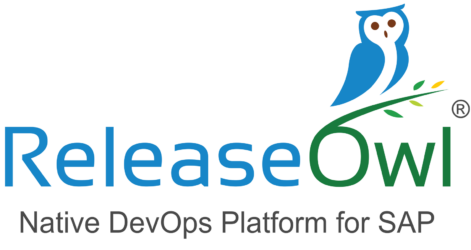SAP Smart Sensing
Filter By
Browse By
- SAP Analytics and AI
- SAP Application Development and Integration
- All SAP Application Development and Integration
- SAP ABAP
- SAP ABAP Development Tools
- SAP ABAP Test Cockpit
- SAP API Management
- SAP BAPI
- SAP Basis
- SAP BRF
- SAP Business Application Studio
- SAP CMS
- SAP Design Studio
- SAP Development Tools
- SAP DevOps
- SAP EAI
- SAP EDI
- SAP Extension Suite
- SAP Fiori
- SAP Fiori Elements
- SAP Integration Suite
- SAP Low Code Application Development
- SAP Low Code Automation
- SAP Netweaver
- SAP Release Management
- SAP UI5
- SAP Web Application Server
- SAP Web IDE
- SAP Business Process Management
- SAP Center of Excellence
- SAP CIO
- SAP Customer Experience
- SAP Data and Data Management
- All SAP Data and Data Management
- SAP BW
- SAP BW/4HANA
- SAP Crystal Reports
- SAP Data Archiving
- SAP Data Center
- SAP Data Governance
- SAP Data Integration
- SAP Data Migration
- SAP Data Quality
- SAP Data Services
- SAP Data Strategy
- SAP Data Visualization
- SAP Data Warehouse Cloud
- SAP DMS
- SAP Document Control
- SAP EIM
- SAP ETL
- SAP ETL Tools
- SAP HANA
- SAP HANA Administration
- SAP HANA Deployment Infrastructure
- SAP HANA Studio
- SAP Master Data
- SAP Master Data Governance
- SAP MDM
- SAP Enterprise Architect
- SAP Enterprise Asset Management
- SAP ERP
- SAP Finance
- All SAP Finance
- SAP Accounting
- SAP AR AP
- SAP Asset Accounting
- SAP Billing Systems
- SAP BPC
- SAP BRIM
- SAP Cash Management
- SAP Central Finance
- SAP Controlling
- SAP COPA
- SAP Cost Center Accounting
- SAP Currency Risk
- SAP e-invoicing
- SAP FICO
- SAP Finance Automation
- SAP Advanced Financial Closing
- SAP Financial Consolidation
- SAP Financial Planning
- SAP FX Risk
- SAP General Ledger
- SAP Global Tax Management
- SAP Hyperion
- SAP Order to Cash
- SAP Payment Processing
- SAP Profitability Analysis
- SAP Rebate Management
- SAP S/4HANA Finance
- SAP SWIFT Compliance
- SAP Treasury Management
- SAP Universal Journal
- SAP Governance Risk and Compliance
- SAP Human Capital Management
- SAP Intelligent Technologies
- SAP Platform and Technology
- All SAP Platform and Technology
- SAP Business Technology Platform
- SAP Cloud
- SAP Cloud Connector
- SAP Cloud Integration Platform
- SAP Cloud Migration
- SAP Cloud Platform
- SAP Cloud Providers
- SAP Cloud Strategy
- SAP Digital Signature
- SAP Container Platform
- SAP HANA Enterprise Cloud
- SAP Digital Asset Management
- SAP Smart Forms
- SAP HEC
- SAP Digital Integration Hub
- SAP Hyperscalers
- SAP Infrastructure
- SAP Messaging
- SAP Quality and Testing
- SAP Security
- SAP Spend Management
- SAP Supply Chain Management
- All SAP Supply Chain Management
- SAP APO
- SAP Asset Management
- SAP Business Network
- SAP Digital Manufacturing Cloud
- SAP Digital Twin
- SAP EWM
- SAP IBP
- SAP Inventory Management
- SAP Label Printing
- SAP Logistics
- SAP Manufacturing
- SAP Manufacturing Automation
- SAP MES
- SAP MII
- SAP MM
- SAP MRO
- SAP MRP
- SAP Order Management
- SAP Plant Maintenance
- SAP PLM
- SAP Production Planning
- SAP S&OP
- SAP SD
- SAP SPM
- SAP Supply Chain Planning
- SAP Track and Trace
- SAP Transportation Management
- SAP System Administration
What Is Smart Sensing?
Sensors have been used in industry for decades to capture specific parameters like temperature. Smart sensors are an evolution of legacy sensors and leverage recent advances in technologies like Internet of Things (IoT) and cloud. Unlike a traditional sensor, a smart sensor can perform advanced tasks such as data conversion, data processing, analytics, and communicating with external devices and the cloud. Many smart sensors can do self-assessment and self-calibration, making them an essential part of digital twins. The data from smart sensors can be leveraged for a plethora of applications, like predictive planning.
What Is Smart Sensing?
Sensors have been used in industry for decades to capture specific parameters like temperature. Smart sensors are an evolution of legacy sensors and leverage recent advances in technologies like Internet of Things (IoT) and cloud. Unlike a traditional sensor, a smart sensor can perform advanced tasks such as data conversion, data processing, analytics, and communicating with external devices and the cloud. Many smart sensors can do self-assessment and self-calibration, making them an essential part of digital twins. The data from smart sensors can be leveraged for a plethora of applications, like predictive planning.
What Is SAP Smart Sensing?
Smart sensing is a capability within the SAP Internet of Things offering that leverages SAP Fiori to identify and track physical objects maintained in SAP S/4HANA. The identification and tracking is done primarily by scanners and smart sensors. Compared to classic IoT scenarios, the SAP smart sensing approach brings the following advantages:
- Tracking of single events rather than recording of continuous data streams significantly reduces the amount of data to process.
- Using auto-ID tags instead of sensors reduces costs.
- Tagging of single items that are part of a delivery or a handling unit allows for a finer granularity and higher precision of the data collected.
While the applications can span multiple functions, a key function that can leverage smart sensing extensively is supply chain. With the help of smart sensors and other technologies like artificial intelligence and machine learning, organizations can build smart, kinetic supply chains, as highlighted in this webinar.
Key Considerations for SAPinsiders
SAP smart sensing is a robust capability to help organizations build components of the intelligent enterprise. However, there are certain key aspects that SAPinsiders need to keep in perspective when embarking on this journey:
Understand the difference between conventional and smart sensors. As mentioned earlier, sensors have been used in industry for a while, but smart sensors take this capability much further. Understanding the “smart” aspect of sensors will allow you to understand where and how to use them.
Think beyond just tracking. While there is no doubt that smart sensors can help track flows or processes in real time, the data often captured by these sensors can be used extensively for generating additional insights. Key advanced analytics approaches like simulation, optimization, and predictive analytics can be leveraged using this data to generate new insights for organizations.
Think end-to-end. A powerful capability of smart sensors is that they can be used to build end-to-end solutions, specifically in process intense functions like supply chains. You can design end-to-end solutions to make your enterprise more resilient and agile.
488 results
-

 Premium
Premium
Spotlight: How Mobile Technologies and Analytics Can Streamline Finance Processes
Reading time: 5 mins
/MobileAt the Financials 2013 conference in Las Vegas, the topics of mobility and predictive analytics were referred to often in the keynote presentations and in several sessions. To learn more about how finance managers can use these technologies to improve their business processes, I asked Carsten Hilker, solution manager at SAP Labs, to answer some...…
-

 Premium
Premium
Dow Corning Delivers BI for the Masses — from the Top Down
Reading time: 13 mins
As an early adopter of SAP Business Warehouse, Dow Corning built a strong foundation of rock-solid data. After nearly a decade of Microsoft Excel-based access for analysts, however, the company needed fresh ways to explore its data, including deeper data mining, predictive analysis, and easy-to-use mobile dashboards. In 2009, Dow Corning reversed its analyst-first strategy...…
-

 Premium
Premium
Build a Mobile Sales Solution with iPhone and Google Maps Integration Using SAP NetWeaver CE 7.2
Reading time: 13 mins
/MobileSAP NetWeaver Composition Environment 7.2 allows SAP developers to build rich user interface (UI) solutions that would have been unheard of a couple of years ago. The combination of service composition and rapid UI modeling allows these solutions to be built in days and weeks rather than months. See how to develop a mobile solution,...…
-
-

 Premium
Premium
SAP Aims to Reach All Corners of the World with New Mobile Strategy
Reading time: 6 mins
Management/MobileIn their first time speaking to the press since SAP acquired Sybase, the companies addressed their mobile strategy going forward and major goals for the coming months. Although 60% of all the business applications and data around the world run on SAP systems, John Chen, Sybase CEO, is eyeing the other 40% as well as...…
-

 Premium
Premium
How to Audit Your SAP BusinessObjects Environment
Reading time: 10 mins
Auditing in SAP BusinessObjects is an area that is not very well understood. Learn about the concept of auditing in SAP BusinessObjects with a focus on configuring audit settings in the Audit Dashboard in BI 4.x. Key Concept Starting with SAP BusinessObjects BI 4.0, you can configure your audit settings in the Audit Dashboard. The...…
-

 Premium
Premium
Test Scope Optimization for Large SAP Change Events Using BPCA of SAP Solution Manager 7.1
Reading time: 17 mins
ManagerCompanies deploying SAP Support Package Stacks or SAP enhancement packages to their SAP solutions need to perform regression tests for their business processes. In general a lot of effort goes into setting up and performing the necessary regression tests. See how you can facilitate this testing process using the Business Process Change Analyzer (BPCA) of...…
-

 Premium
Premium
The New Way to Set Up Diagnostics: Guided Procedures in SAP Solution Manager 7.0 with SAP Enhancement Package 1
Reading time: 20 mins
ManagerLearn how to set up and use Solution Manager Diagnostics (SMD) and Wily Introscope Enterprise Manager 8.2.2 using Guided Procedures. This is new feature in SAP Solution Manager 7.0 with SAP enhancement package 1 that guides you through setting up SMD, which is often a very complex process. Key Concept Starting in SAP Solution Manager...…
-
-

 Premium
Premium
Building a Better Business Process Hierarchy (BPH)
Reading time: 13 mins
ManagerLeverage these techniques and standards to produce a business process hierarchy (BPH) that accurately represents your “to be” solution, improves solution documentation, reduces effort, and provides more intuitive navigation. Key Concept Taking advantage of standards for naming conventions, using shortcuts, and document linking can provide more insight into your solution design, improve transparency of process...…
-

 Premium
Premium
SAP EPM Big Data Use Cases
Reading time: 37 mins
This article explores the concept of using Enterprise Performance Management—EPM—to drive big data use cases, primarily focused on integrated strategic, financial, and operational reporting, and analytic capabilities. These big data use cases demonstrate both the business and technical value necessary to justify investments in big data platforms such as SAP HANA. Key Concept Enterprise Performance...…
-

 Premium
Premium
Set Up Preference Processing to Delineate Customs Tariff Priorities and Manage Risk with Global Sourcing
Reading time: 19 mins
This walk-through of the configuration steps for Preference Processing within SAP GRC Global Trade Services Risk Management shows how to address tariff preferences in your trade application and systems. It includes setting up the communication between SAP GRC Global Trade Services and SAP ERP Central Component. Key Concept Duty and restriction applies to goods imported...…
Become a Member
Unlimited access to thousands of resources for SAP-specific expertise that can only be found here.
Become a Partner
Access exclusive SAP insights, expert marketing strategies, and high-value services including research reports, webinars, and buyers' guides, all designed to boost your campaign ROI by up to 50% within the SAP ecosystem.
Upcoming Events
Related Vendors
Your request has been successfully sent


